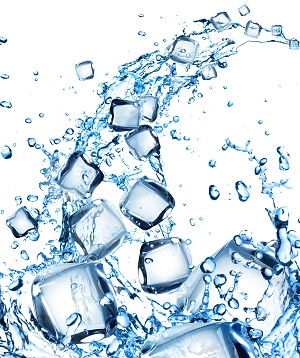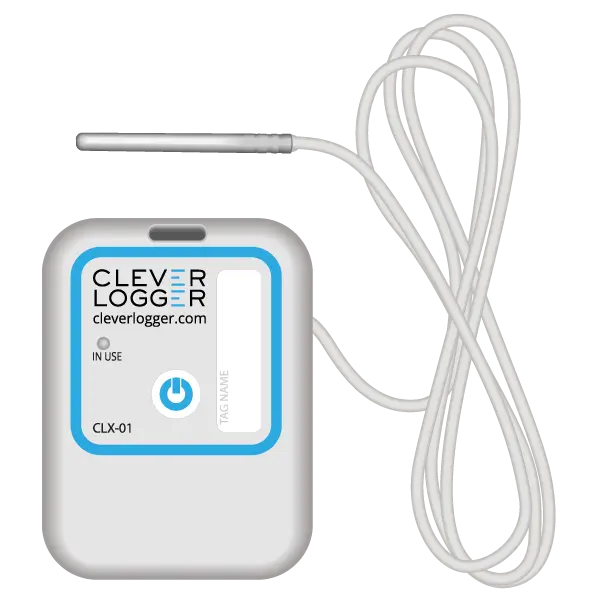
FAQ
If you are doing an ice-slurry test on Clever Logger because it is being used in a vaccine fridge, then STOP!
Strive For Five section 4.4 applies to thermometers. It does not apply to temperature loggers. Strive For Five makes a clear distinction between temperature loggers and thermometers, and the ice-slurry test is specifically for thermometers.


The ice-slurry test is an often (ab)used test for thermometers and temperature loggers to see how accurate they are.
The two big benefits of the ice-slurry test are:
Many people think they can get some ice, smash it up a bit, pour in some water, and that’s an ice-slurry test.
The problem with this solution is that:
1. water, by definition, is above 0°C and if your thermometer is mainly in water, it is above 0°C.
2. ice, by definition, is below 0°C and if your thermometer is primarily surrounded by ice, it is below 0°C.
You really need shaved ice, in a slushy type environment. To get very accurate, you need pure water and a couple of other factors.
Practically, it is likely that the ice-slurry that you are measuring will be above 0°, and given the next problem, likely to be significantly above 0°C.
When you place a device in the ice-slurry, it will take time for the device to drop to the temperature of the slurry. For some devices this could be seconds. For many it is a minute or more.
The only way you can tell that you have reached a stable temperature is to take a reading, wait at least 15 seconds, and take a second reading. If they are the same then the temperature has stabilised. With thermometers, this is relatively easy.
With a logger, however, this means you need to wait for two consecutive readings to be the same. The only way you can guarantee this is for it to be in the ice slurry for an extended period.
With Clever Logger, you are limited to a 3 minute sample rate, so it needs to be in the ice-slurry for at least 10 minutes to ensure a stable reading. Keep in mind, however, that as time goes by, the ice-slurry will slowly warm up.
BUT then Strive For Five only applies to thermometers, not loggers!!!
Thermometers are designed to be water proof and generally have a sensor that can easily be placed in water.
Most temperature loggers are not water-proof. They are not designed to be placed in water and ice. You can seal them in a bag and place it in the water, but keep in mind that this will slow down their response times. It will take them longer to settle at the correct temperature.
BUT then Strive For Five only applies to thermometers, not loggers!!!
Clever Logger (and every other wireless device) has the extra challenge that signals can not get through water and ice.
This doesn’t mean an ice-slurry test is impossible. It just means you can’t watch the results live to see when it settles down.
BUT then Strive For Five only applies to thermometers, not loggers!!!
Clever Logger is sold to government departments, public and private hospitals, and other large corporations. We understand that it’s often not possible to purchase with a credit card on a web site.
Call us on 1300 80 88 89 or send an email to [email protected] and we’ll send you a written quote. We are happy to send out most orders on receipt of a verified purchase order.


All prices are in Australian dollars and include GST

KEEP BATTERIES OUT OF REACH OF CHILDREN
Clever Logger loggers are intended for commercial use only. They contain small batteries. Swallowing can lead to chemical burns, perforation of soft tissue, and death. Severe burns can occur within 2 hours of ingestion. Seek medical attention immediately.
To prove it, we’ll send you a Starter Kit to try out for a whole month.
Set it up, have a play, explore the features – obligation free.
If you love it, just let us know.
If not, just send it back.

The National Association of Testing Authorities (NATA) is the recognised national accreditation authority for analytical laboratories and testing service providers in Australia. It is an independent, not-for-profit organisation that provides independent assurance of technical competence.
NATA accredits organisations to perform testing and inspection activities for their products and services. This gives consumers the assurance they need to make safe, healthy and reliable choices .

| QUICK SPECS | |
|---|---|
| Model | CLD-01 |
| Type | Temperature only with Dual Sensors |
| Temperature Range | Internal sensor: -23°C to +60°C External sensor: -40°C to +80°C |
| Humidity Range | N/A |
| Battery Type | CR2450 |
| Battery Life | Replace every 12 months |
| Accuracy |
Internal Sensor: ±0.3℃ (0℃ to +60℃) ±0.3℃ to ±0.7℃ (other temperatures) External Probe: ±0.5℃ (-20℃ to +40℃) ±1℃ (other temperatures) |
| Offline Memory | approx 24 days logging at 5 minute intervals |

| QUICK SPECS | |
|---|---|
| Model | CLX-01 |
| Type | Temperature only with Probe |
| Temperature Range | -40°C to 60°C Can operate up to 80°C for short periods |
| Humidity Range | N/A |
| Battery Type | CR2450 |
| Battery Life | Replace every 12 months |
| Accuracy | ±0.5℃ (-20℃ to +40℃) ±1℃ (other temperatures) |
| Offline Memory | approx 24 days logging at 5 minute intervals |